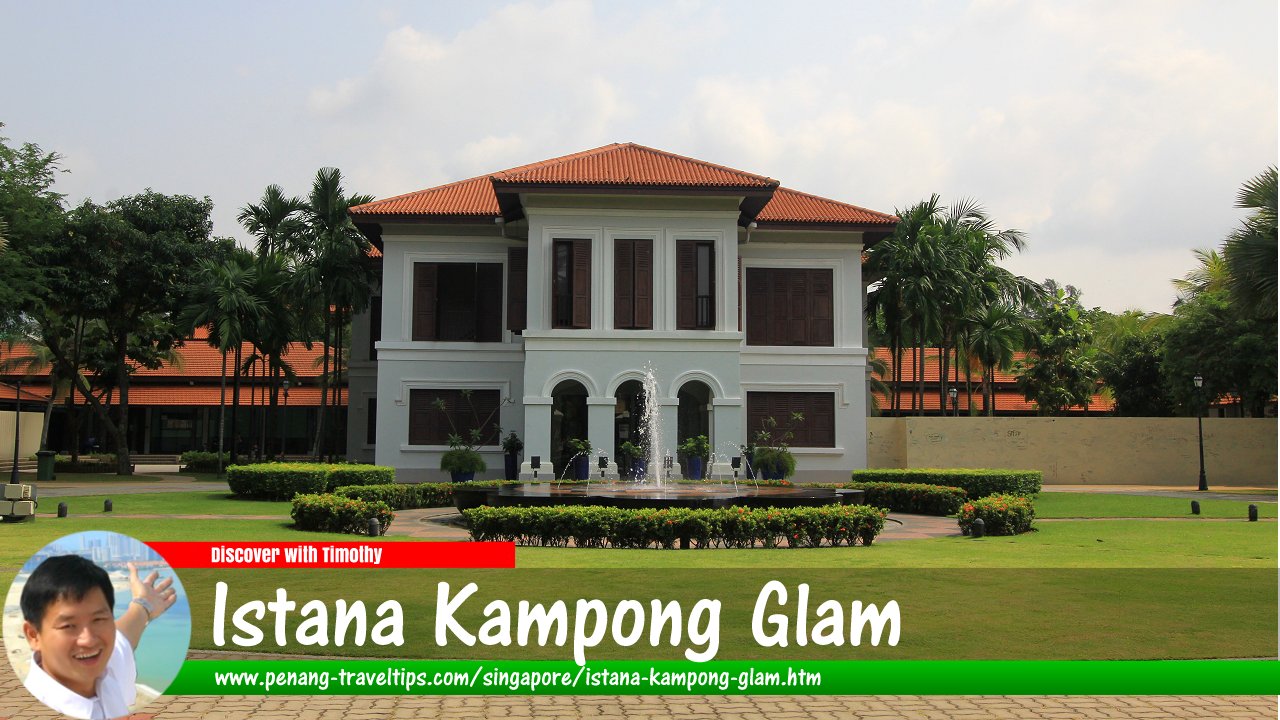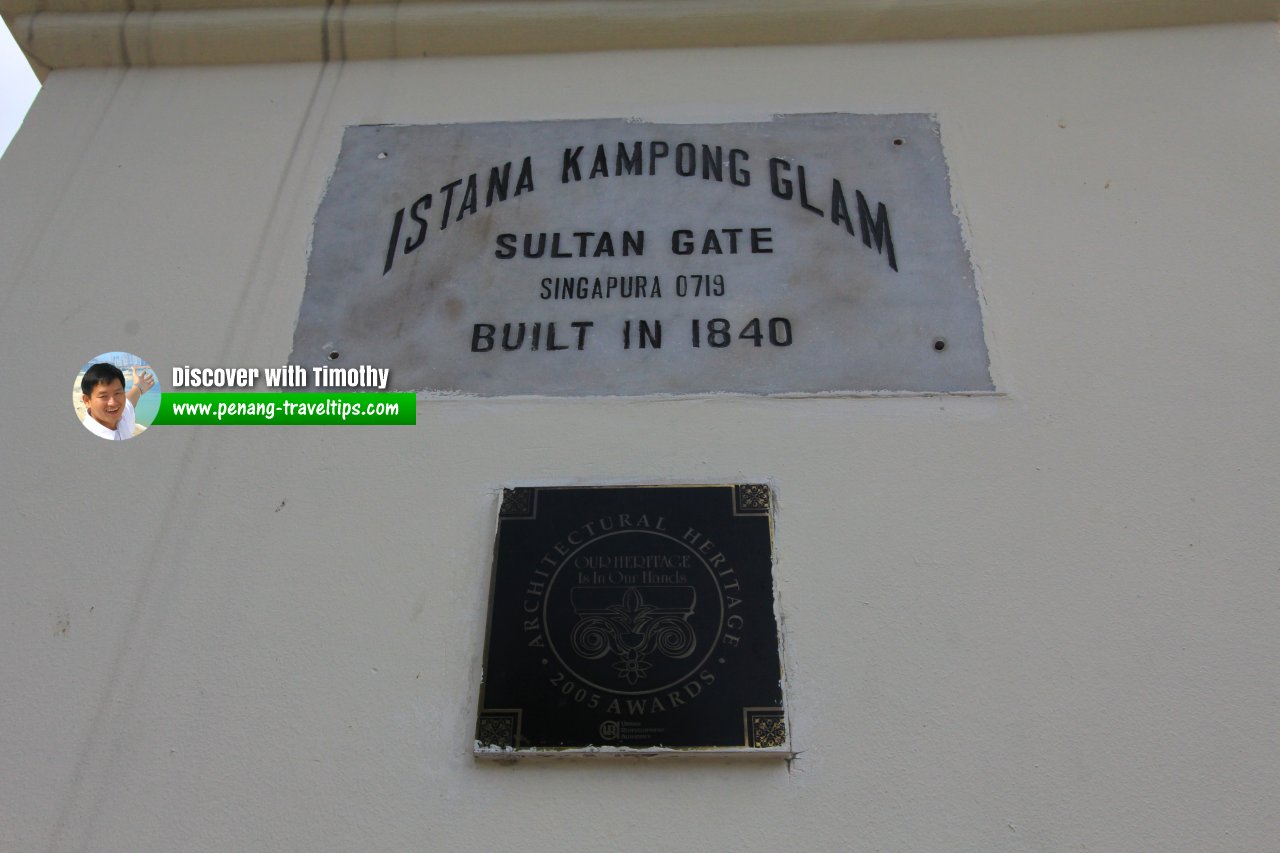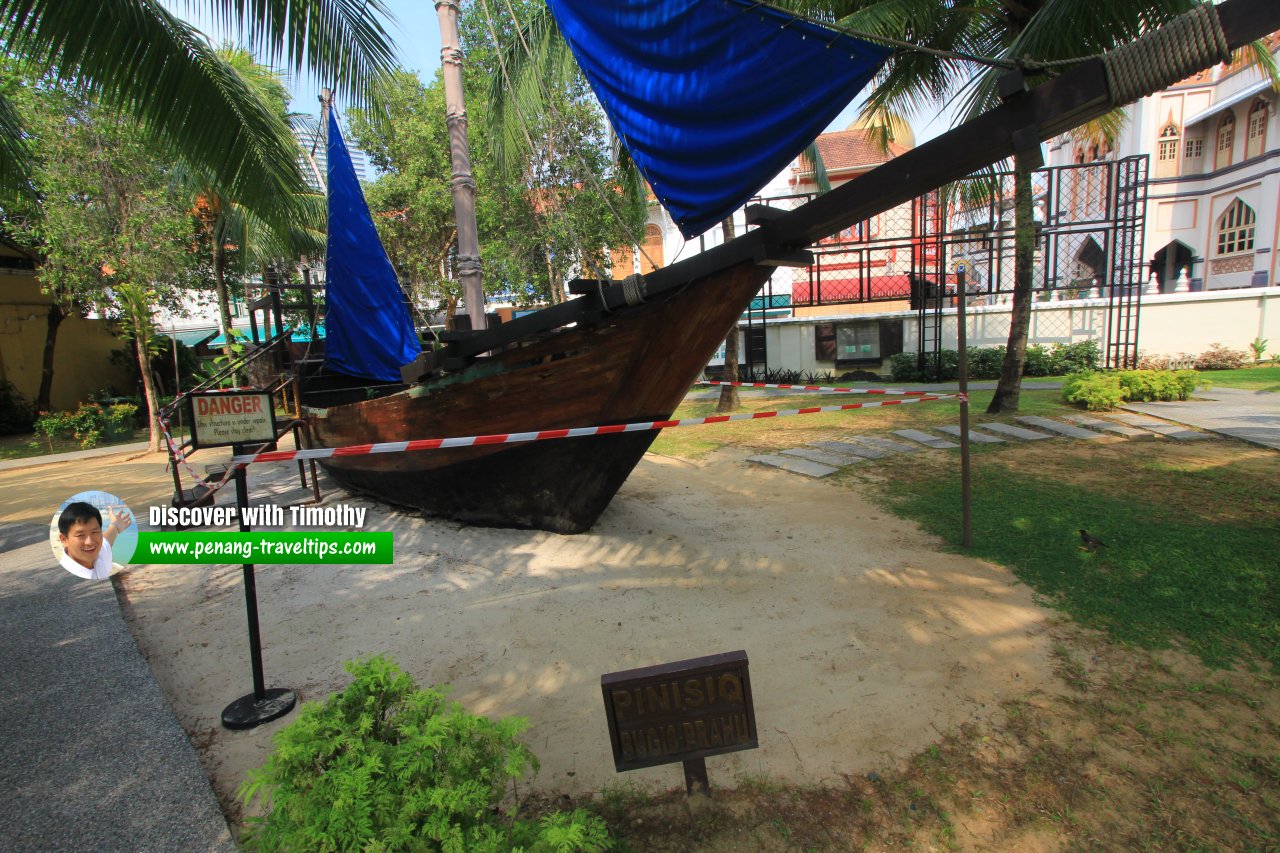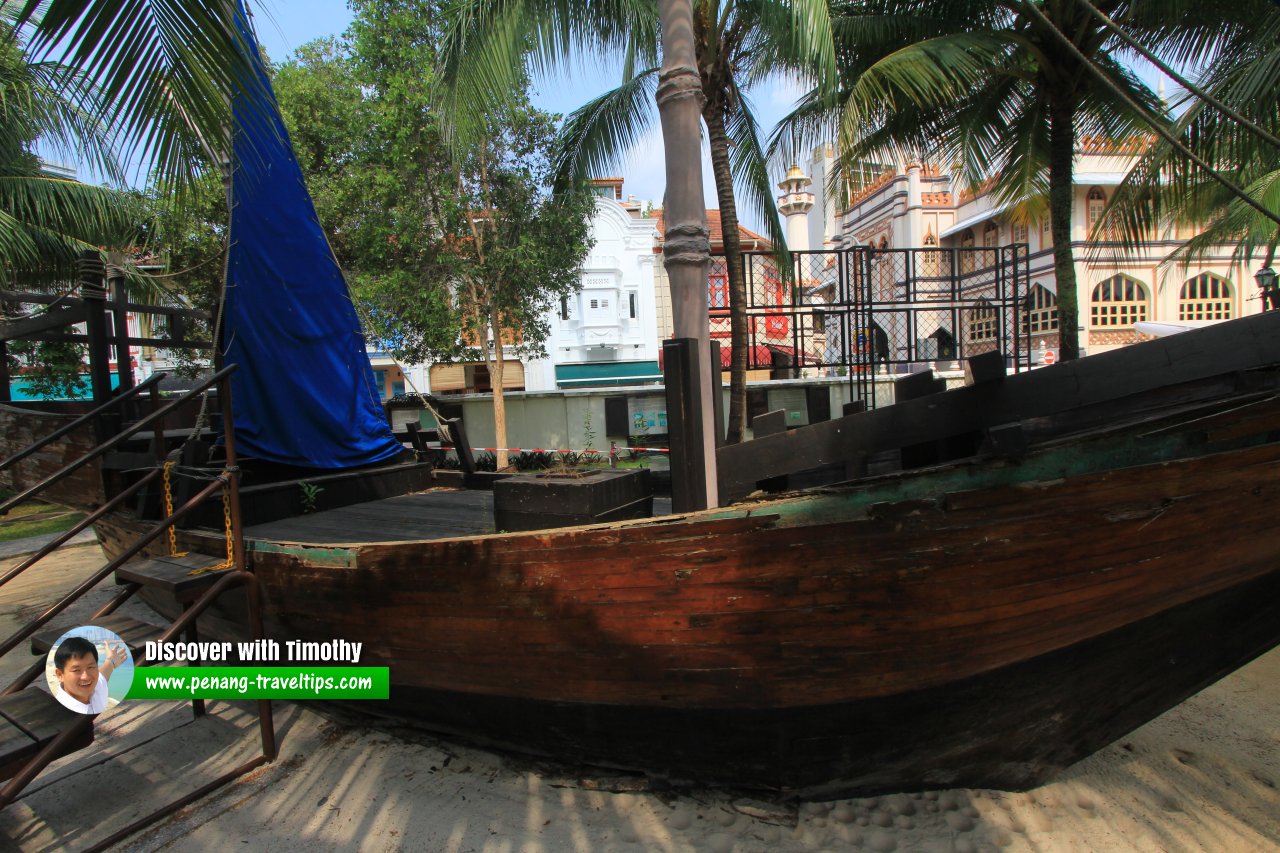 Istana Kampong Glam, Singapore (10 July 2011)
Istana Kampong Glam, Singapore (10 July 2011)
Istana Kampong Glam (GPS: 1.30289, 103.85987) was the residence of the Sultan of Johor in Singapore. It is located within its own compound at the end of Sultan Gate. Today it serves as the Malay Heritage Centre, a cultural centre that showcases the heritage, culture and history of Malay Singaporeans. The centre was launched on 27 November 2004. It is administered by the Malay Heritage Foundation as the culmination of a restoration project that started in 1999.
As mentioned, Istana Kampong Glam was formerly the palace of the Sultan of Johor. The original Istana Kampong Glam was built by Sultan Hussein Shah of Johor around 1820. The original structure occupied an area twice the size of the present compound. The compound was reduced in 1824 when North Bridge Road was constructed.
The present structure was commissioned by Sultan Ali Iskandar Shah, the son of Sultan Hussein in 1835. It was built between 1836 and 1843. The architect is believed to be George Drumgoole Coleman, who designed many other buildings in Singapore that are now heritage sites, including the Old Parliament House and the Armenian Church. Coleman employed a Palladian style but blended in Malay motifs.
The compound of the Istana was enclosed by a perimeter wall. The Sultan's kin, servants and artisans lived in kampong-style houses around the perimeter. Sultan Ali's son, Tengku Allum, lived at Istana Kampong Glam until his death in 1891. He was buried at the royal grave at Sultan Mosque. After his death, a succession dispute erupted in 1896 among members of the royal family over rights to the Kampong Glam estate. The matter went to court, which ruled that no one could rightfully claim to be the successor of the Sultan, and that the estate belonged to the Crown.
In 1904, the Sultan Hussein Ordinance was enacted to provide the descendants of Sultan Hussein with income derived from the Kampong Glam estate. The amount was capped at S$250,000 in 1991, revised by the government in 1999. Under the new scheme, the beneficiaries could opt either for a share of S$350,000 a year for 30 years or for a lump sum payment.
The Istana compound continued to be the private residence of the Sultan's descendants until the building underwent conservation works, when they were resettled. The Istana was restored according to Coleman's original design, with special emphasis on retaining its compound, walled enclosure and road leading to it. Timber and cement were used to replicate the interior flooring of the former building.
 Istana Kampong Glam plaque (10 July 2011)
Istana Kampong Glam plaque (10 July 2011)
 Pinisiq, a Bugis prahu, within the compound of Istana Kampong Glam (10 July 2011)
Pinisiq, a Bugis prahu, within the compound of Istana Kampong Glam (10 July 2011)
 A closer view of the Pinisiq (10 July 2011)
A closer view of the Pinisiq (10 July 2011)
Bugis sailing vessels or prahus include the palari, padewakang, patorani, pinisig, pajala, lambo and baggo. Most of these prahus are variations of the pajala, which is the basic hull design of Bugis fishing boats. Initially, the Bugis sailed on boats with limited variations, but as trade expanded, larger padewakangs were used in order to carry heavier loads.
Taking the MRT to Istana Kampong Glam
The nearest MRT station is the Nicoll Highway MRT Station (CC5), which is 700 meters away on foot. It is also 800 metres to the Bugis MRT Station (EW12).Istana Kampong Glam is  on the Map of Sultan Gate, Singapore
on the Map of Sultan Gate, Singapore
Istana Kampong Glam is  on the Map of Kampong Glam, Singapore
on the Map of Kampong Glam, Singapore
List of the Historic Buildings in Singapore; Discover Singapore
 Copyright © 2003-2025 Timothy Tye. All Rights Reserved.
Copyright © 2003-2025 Timothy Tye. All Rights Reserved.
Copyright © 2003-2025 Timothy Tye. All Rights Reserved.

 Go Back
Go Back